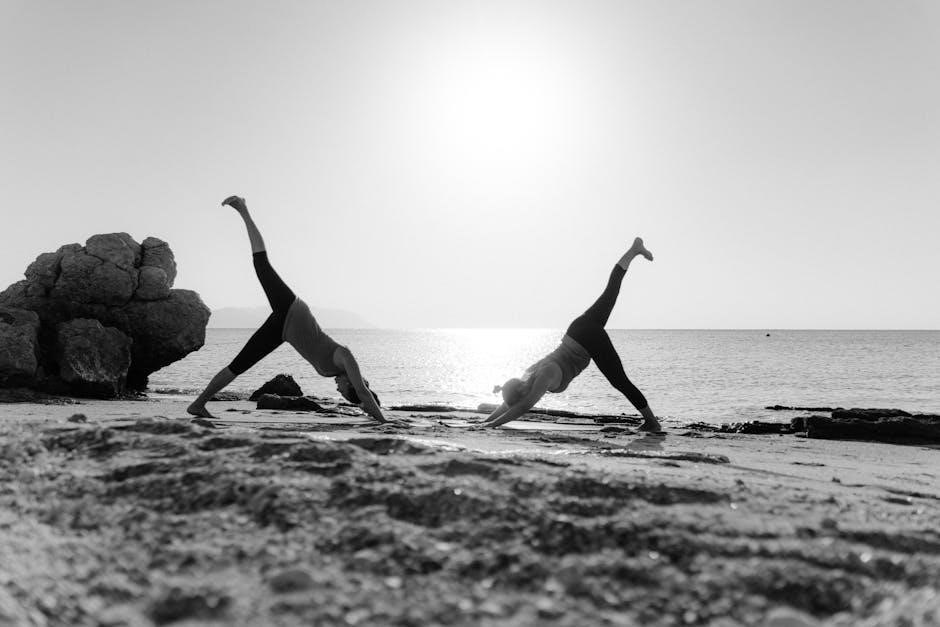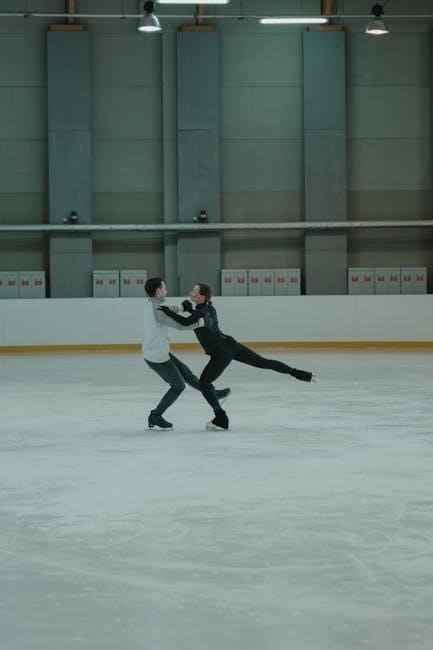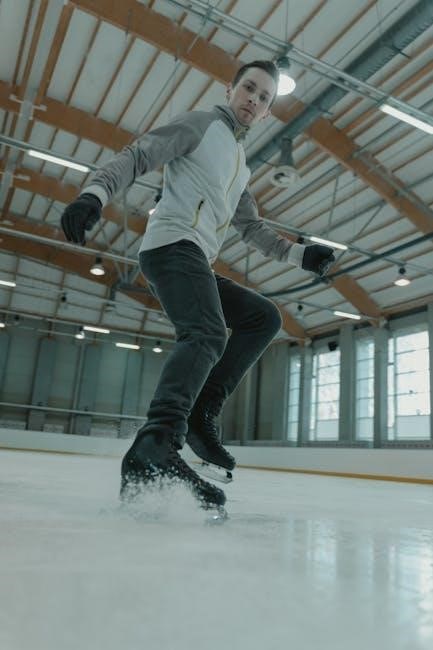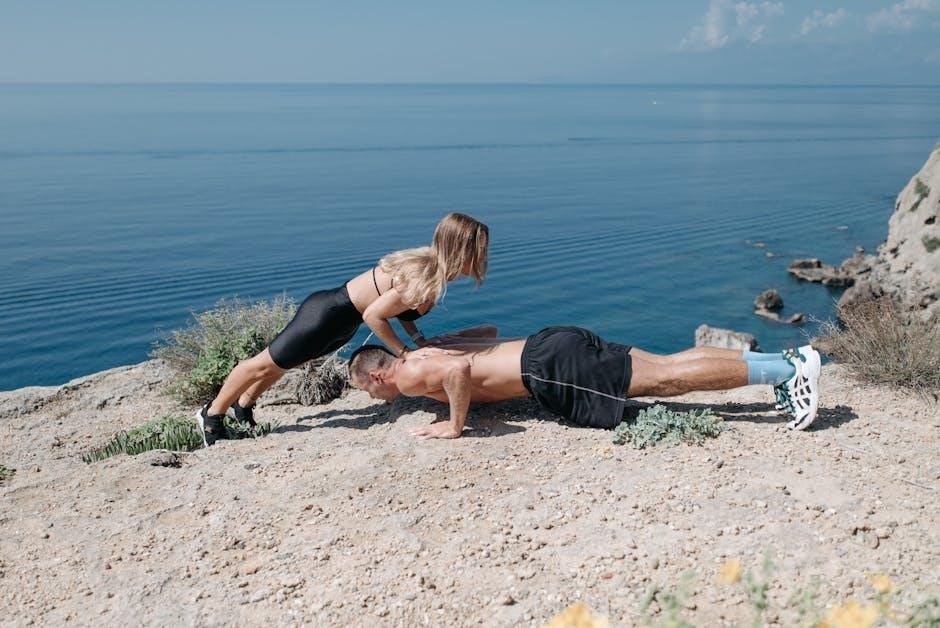Understanding Anterolisthesis and Its Implications
Anterolisthesis is a spinal condition where a vertebra slips forward, potentially compressing nerves and causing pain. Understanding its implications is crucial for effective management and exercise planning.
Definition and Overview of Anterolisthesis
Anterolisthesis refers to a spinal condition where a vertebra slips forward relative to the vertebra below it, often causing nerve compression and discomfort. This forward slippage, typically measured on an X-ray, can lead to pain, stiffness, or limited mobility. It is a type of spondylolisthesis and may result from degenerative changes, trauma, or congenital issues. Understanding this condition is essential for developing appropriate treatment and exercise plans to manage symptoms and improve spinal stability.
Common Causes and Risk Factors
Anterolisthesis often arises from degenerative spinal changes, physical trauma, or congenital conditions. Aging is a significant risk factor, as spinal wear and tear can weaken vertebral structures. Strenuous activities, such as bodybuilding or heavy lifting, may exacerbate the condition. Pre-existing spinal issues, like spondylolysis, also increase susceptibility. While exercises can help manage symptoms, certain movements may worsen the slippage, emphasizing the need for professional guidance to avoid further spinal strain and ensure safe rehabilitation practices.

Importance of Professional Consultation
Consulting a chiropractor or healthcare provider is essential to ensure exercises are safe and effective, preventing further spinal strain and promoting proper rehabilitation tailored to individual needs.
Role of Chiropractors and Healthcare Providers
Chiropractors and healthcare providers play a vital role in managing anterolisthesis by designing personalized exercise plans and ensuring proper spinal alignment. They assess the severity of the condition and tailor treatments to avoid exacerbating the slippage. Professional guidance helps patients avoid harmful movements and focuses on stabilizing the spine. Regular consultations ensure exercises are modified as needed, promoting safe and effective rehabilitation. Their expertise is crucial for preventing further spinal strain and enhancing overall well-being through targeted care.
Precautions Before Starting an Exercise Regimen
Before beginning any exercise regimen for anterolisthesis, it’s essential to consult a healthcare provider or chiropractor. Avoid high-impact activities that strain the spine, such as heavy lifting or excessive twisting. Start slowly and gently to prevent worsening the condition. Focus on exercises that promote spinal stability and flexibility without overextending. Be cautious of movements that cause pain or discomfort, as these may indicate improper technique or excessive strain on the affected vertebrae.
Effective Stretching Exercises for Anterolisthesis
Pelvic tilt exercises and gentle hamstring stretches improve flexibility and reduce strain on the lumbar spine, promoting stability and alleviating discomfort associated with anterolisthesis.
Pelvic Tilt Exercises for Lumbar Stability
Pelvic tilt exercises strengthen the core muscles, enhancing lumbar stability. Lie on your back, knees bent, and gently tilt your pelvis upward, holding for a few seconds. This movement engages the abdominal muscles, providing support to the lower spine. Regular practice improves posture and reduces strain, making it an essential exercise for managing anterolisthesis. Start slowly and gradually increase repetitions as comfort allows, ensuring proper form to avoid exacerbating the condition.
Hamstring and Gluteal Stretches
Hamstring and gluteal stretches are essential for improving flexibility and reducing tension in the lower back. Standing hamstring stretches and seated stretches target the back of the thighs, while gluteal stretches focus on the buttocks. Gentle, sustained movements help alleviate tightness without overstraining. These exercises complement core strengthening and pelvic tilts, promoting overall spinal stability. Perform stretches slowly and hold for 20-30 seconds to maximize benefits and avoid discomfort. Consistency is key to maintaining flexibility and supporting the spine.

Strengthening Exercises to Support the Lumbar Spine
Strengthening exercises are crucial for stabilizing the lower back and managing anterolisthesis. They target core muscles and improve spinal support, aiding in long-term stability and pain reduction.
Core Strengthening Techniques
Core strengthening is essential for spinal stability in anterolisthesis. Techniques like planks, bridges, and gentle abdominal exercises help reinforce the muscles around the lower back. These exercises improve posture, reduce strain on the spine, and promote overall lumbar stability. It’s important to perform these movements slowly and controlled, avoiding any that exacerbate discomfort. Consulting with a healthcare provider ensures exercises are tailored to individual needs and severity of the condition, fostering safe and effective progress.
Dead Bugs and Bird-Dog Exercises
Dead Bugs and Bird-Dog exercises are highly effective for improving spinal stability in anterolisthesis. Dead Bugs involve lying on your back, extending arms and legs alternately, strengthening core muscles without straining the spine. Bird-Dog exercises, performed on hands and knees, enhance balance and strengthen lower back muscles. Both exercises promote proper spinal alignment and reduce discomfort when done gently. These low-impact movements are ideal for managing anterolisthesis and should be guided by a healthcare professional to ensure safety and effectiveness.

Pilates-Based Exercises for Stability
Pilates-based exercises like Dead Bugs, Femur Arcs, Chest Lift, Superman, and Dart are effective for enhancing spinal stability and core strength, crucial for managing anterolisthesis.
Dead Bugs, Femur Arcs, and Chest Lift
Dead Bugs target core muscles, enhancing stability without spinal stress. Femur Arcs improve hip mobility and lower back alignment. Chest Lifts strengthen neck and shoulder muscles, reducing spinal strain. These exercises promote posture and reduce pain, ideal for anterolisthesis management.
Superman and Dart Exercises
Superman strengthens the lower back muscles, improving spinal stability and posture. Dart exercises target the lower back and glutes, enhancing flexibility and alignment. Both are low-impact, promoting spinal health without excessive strain, making them ideal for managing anterolisthesis effectively.

Low-Impact Aerobic Exercises
Low-impact aerobics, such as swimming and cycling, are ideal for promoting cardiovascular health while minimizing spinal strain, making them safe and effective for managing anterolisthesis.
Swimming and Cycling for Spinal Health
Swimming and cycling are ideal low-impact exercises for spinal health, promoting stability and strength without excessive strain. These activities enhance cardiovascular fitness while minimizing spinal stress, making them perfect for managing anterolisthesis. Swimming, in particular, provides buoyancy, reducing pressure on the spine, while cycling strengthens core muscles essential for spinal support. Both exercises avoid high-impact movements, reducing the risk of worsening the condition. Consistency in these activities is crucial for long-term spinal health management.

Avoiding High-Impact Activities
High-impact activities, such as running or jumping, can strain the spine and worsen anterolisthesis. Avoiding these helps protect the spine and prevent further slippage or discomfort.
Why Certain Exercises Should Be Avoided
Certain exercises, such as heavy lifting or high-impact sports, can strain the spine and exacerbate anterolisthesis. Activities that involve repetitive twisting or bending should also be avoided to prevent further slippage. These movements can increase the stress on the affected vertebra, potentially worsening the condition. It’s essential to focus on low-impact, stability-enhancing exercises instead; Always consult a healthcare provider to determine which exercises are safe and appropriate for your specific condition to avoid aggravating the spinal misalignment.
Progression and Modification of Exercises
Exercises for anterolisthesis should be progressed gradually, starting with gentle movements and increasing intensity as stability improves. Modifications are essential to accommodate individual condition severity and prevent overstrain.
Adjusting Exercises Based on Condition Severity
Exercises for anterolisthesis must be tailored to the severity of the condition. Mild cases may tolerate gentle stretching and strengthening, while severe cases require more cautious approaches. Consultation with a chiropractor or healthcare provider is essential to ensure exercises are modified appropriately. High-impact activities should be avoided, and progression should be gradual to prevent exacerbation. For severe cases, low-impact movements like pelvic tilts and hamstring stretches are often recommended, while more advanced exercises like dead bugs or bird-dog may be introduced as stability improves.

Consistency and Long-Term Management
Regular exercise and adherence to a tailored regimen are vital for managing anterolisthesis long-term. Consistency helps maintain spinal stability and prevents progression of the condition over time.
The Role of Regular Exercise in Managing Anterolisthesis
Regular exercise plays a pivotal role in managing anterolisthesis by enhancing spinal stability and reducing discomfort. Gentle stretches, core strengthening, and low-impact activities help alleviate symptoms without exacerbating the condition. Consistency in performing these exercises promotes long-term spinal health and prevents further slippage. It is essential to tailor routines to individual needs and progress gradually to ensure safety and effectiveness in managing anterolisthesis effectively over time.

No Responses